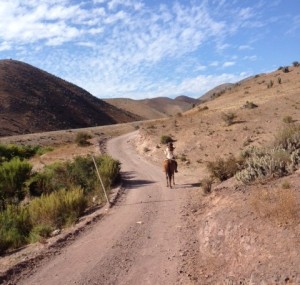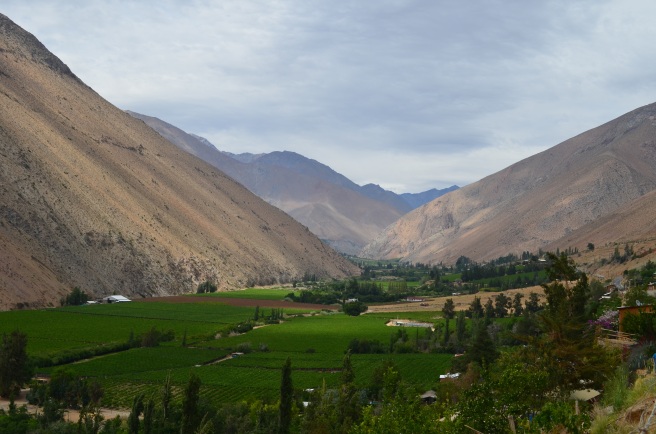Inevitably in the life of a traveler, you are having a glass of wine with a friend, talking about where you’re headed next, and they will pop the question:
“But why do you need to travel?”
Or some variation thereof.
As if it’s a choice, I always think, followed immediately by — I am so incredibly lucky. Travel is an incredible privilege, and of course it’s a choice.
But I think once you cross a certain line — maybe it’s a number of days abroad or a surprise experience or your first foreign friend — it also becomes a part of who you are, and you can’t stop traveling any more than you can stop getting older.

When I’m the U.S., I can be in my city of residence for maybe one month before I start to itch to be somewhere else. At two months, my leg starts to twitch and I’m booking a flight, and by three months, I’m on a plane.
I remember once in the last five years being asked where I was going next, and responding, to my own surprise, “I have no trips planned.”
Which immediately set off a major internal panic attack and frantic Kayak search for flights.

But the best way to answer this question of “why travel” is to recount one of the many, many amazing days exploring a new place.
#1: Travel for the taste and feel of a new place.
Last month in Chile, I spent a day in Bahia Mansa, this tiny fishing village on the Pacific Ocean, rugged cliffs and forested hills. The one road into Bahia Mansa dead ends at the pier’s dusty parking lot, framed by wooden seafood stalls. At the entrance to the town is a sweet cove of a beach, where I sat in the sun, eating blueberries and cherries I bought from a family at the weekend-only market one town over.
Savoring the slight sweet-tart of the blueberries on my tongue, I watched a puppy wildly chase seagulls along the sand – only to wildly run away whenever the water broke a little too close to his paws.

#2: Travel for the lazy discovery of something new.
I had gone to Bahia Mansa with the plan to see penguins by boat, lured by a flyer left in my hostel. On the pier, a man came up to me with the same flyer, and I said I was in. Vamos!
But no, he explained, he needed a minimum of five people, and we were now just three. So, in about 30 minutes we would go, he said.
Having played this game before, I clarified: “Are we going in 30 minutes or when you get five people?”
He smiled. “Five people.”
So I settled into life on an active fishing pier, watching the bartering between fishermen and buyers. Two fishermen pulled up nets full of crabs. People approached, jumping back with squeals and laughter when the claws moved. Families came and went, heavy bags of fish in hand.

After an hour, the penguin guide hurried to me with his thumbs up —good to go, we were now five. I hustled to the boat launch with three other tourists — and it’s clear we are still definitely not five.
The guide goes back to search for his missing No. 5. We keep waiting.
This person supposedly shows up, because the guide comes back and says, “Vamos!”
Only now he checks the boat and realizes we are missing our illustrious captain. The guide goes in search of El Capitano, and we can see the outcome at the end of the pie: He is found eating a leisurely lunch at one of the stalls.
We wait some more.
#3: Travel to meet wonderful people.
The day before coming to Bahia Mansa, I was two towns to the south on a beautiful but ginormous-fly-filled beach. I spent my quick 30 minutes there fending off attacks from kamikazing flies like a crazed person with a branch — imagine the sound of bees, but twice the size.

A kind family offered me a ride back to my beach town, so I took it to avoid another hour walking with these aggressive flies. (Which apparently only plague this town for three weeks in January, so avoid those few weeks if you can!)
I arrived at my hostel, and within seconds realized I had lost my phone. I was sure it had fallen out in this nice family’s car, and I was hopeful they would bring it back.
Now waiting in Bahia Mansa a day later, as I spied the penguin guide and our now-satiated captain coming back up the pier, a couple approached me, asking if I speak Spanish. Thinking they wanted to chat, I was slightly tripped up when they ask if I was at a beach yesterday and lost something.
Yes, I answered hesitantly, because this was not the people of the van who gave me a ride.
“Where were you yesterday? Were you batting flies with a branch?”
I laugh, happy my crazy performance made me recognizable as it clicks into place — this couple has found my phone!
They found it in the sand, they explained. They saw me get into the family’s car, they’d been waiting for me to call the phone to find it, and they even went to the police station to see if anyone had reported it missing.
They were so happy to find me, and me them. I exchanged big hugs with the woman, and we exclaimed over and over how amazing it was that we found each other (as the penguin guide was tapping his foot in the background, as if I had kept him waiting for hours).
We said goodbye, and I sent a big thank you to the universe for the incredible kindness of strangers.
#4: Travel for the thrill of adventure.
I have an awe- and terror-filled relationship with the ocean.
I love to be on the beach — at least 30 feet back from the waves.
I love the sound of waves crashing from my room window at night above the tsunami hazard line.
And I love the idea of body surfing, but there is no way in hell I am going in to try unless it’s crystal clear and there are at least 5 people around me creating a perimeter for sharks to bite first.
But penguins!
I will brave this shark-infested body of likely death and drowning for a look at penguins.
As we exited the harbor, I kept a white-knuckled grip on the bar under my boat’s seat as large swells rocked our tiny boat. We hugged the jagged rocks — a little too huggy for my comfort.
The guide asked the captain if we could make it through the rocks in the swells.
“I’m going to try,” the captain said. (Sometimes it’s better to not speak a language!)
By the time we got to the penguins, I was feeling quite green and had decided against my odds for making it to land safely if we were smashed against the cliffs.

With my eyes closed half the time and a forced breath at least twice every minute, we made it back to the pier. I wobbled back to the beach and collapsed to the sand, digging my feet and hands into its warmth.
The next day, the local news reported massive irregular swells along the Chilean coast of up to 5 meters (16 feet). We had been just ahead of the storm.

I finished the day in a hammock with a glass of wine. Seriously, traveling is the best.
Why do you travel?



















